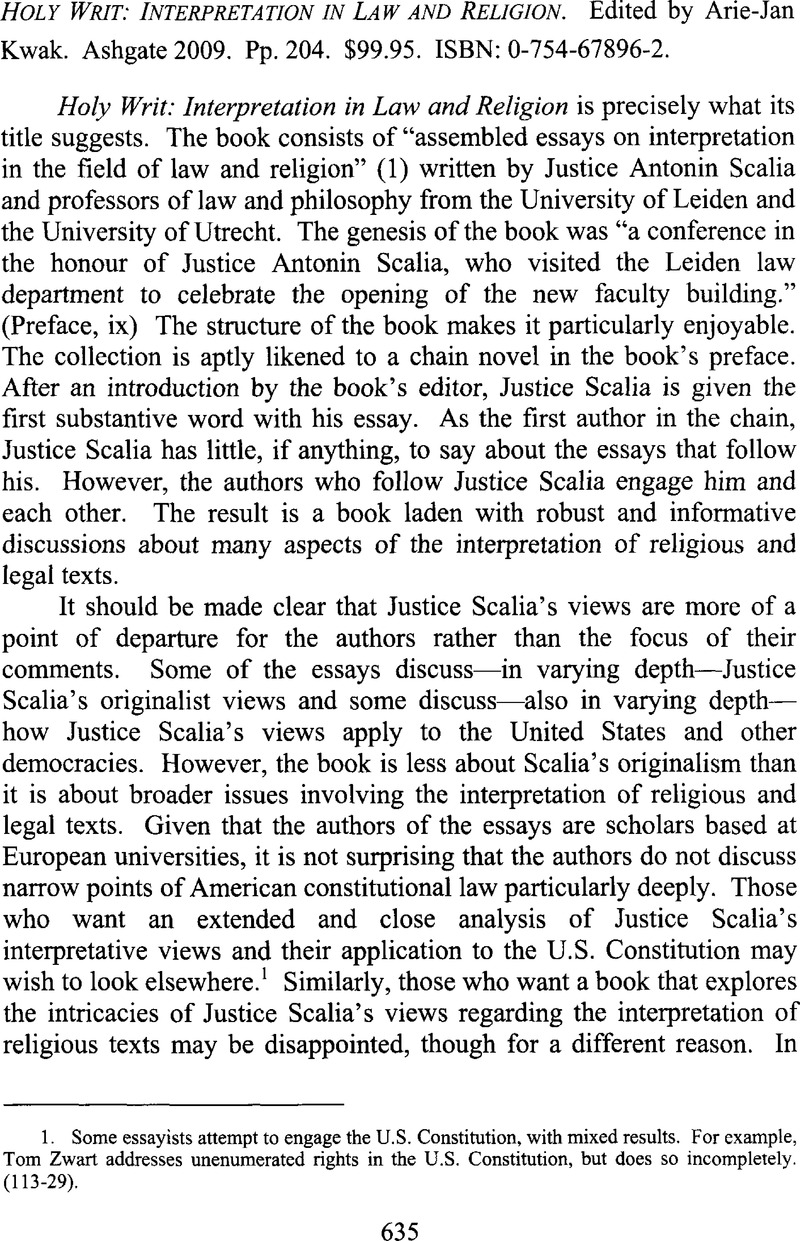No CrossRef data available.
Article contents
Holy Writ: Interpretation in Law and Religion. Edited by Arie-Jan Kwak. Ashgate2009. Pp. 204. $99.95. ISBN: 0-754-67896-2.
Review products
Published online by Cambridge University Press: 24 April 2015
Abstract

- Type
- Book Reviews
- Information
- Copyright
- Copyright © Center for the Study of Law and Religion at Emory University 2010
References
1. Some essayists attempt to engage the U.S. Constitution, with mixed results. For example, Tom Zwart addresses unenumerated rights in the U.S. Constitution, but does so incompletely (113-29).
2. Justice Scalia distinguishes the U.S. Constitution's Bill of Rights' enforceable legal rights with the Declaration of Independence's discussion of principles. (12).
3. Hans Nieuwenhuis's essay contribution tracks these two issues quite closely. (131).
4. Why the text is being interpreted matters. Accordingly, Willem B. Drees notes in his essay:
The historians are not textualists. They are text-oriented, but not textualists in the sense given to the term above. If archaeological excavations or Hellenistic sources reveal facts relevant to the interpretation of passages of the Sermon on the Mount, it would be against the professional ethic to disregard such text-extemal evidence on the basis of a textualist preference. (51).
5. Tom Zwart notes: “Others, like Justice Scalia, who is the most prominent advocate of Originalism, will try to establish what the words meant to those living at the time that the Constitution was drafted.” (115).
6. See Chambers, Henry L. Jr.Biblical Interpretation, Constitutional Interpretation, and Ignoring Text, 69 Md. L. Rev. 92 (2009)Google Scholar.


